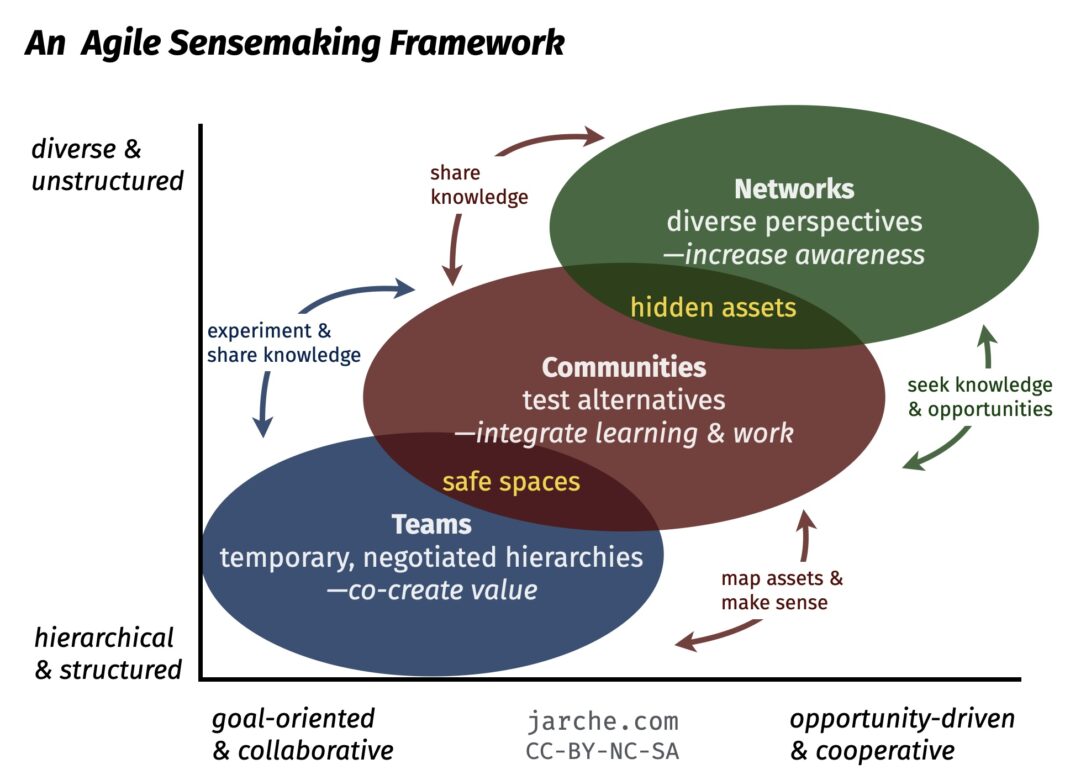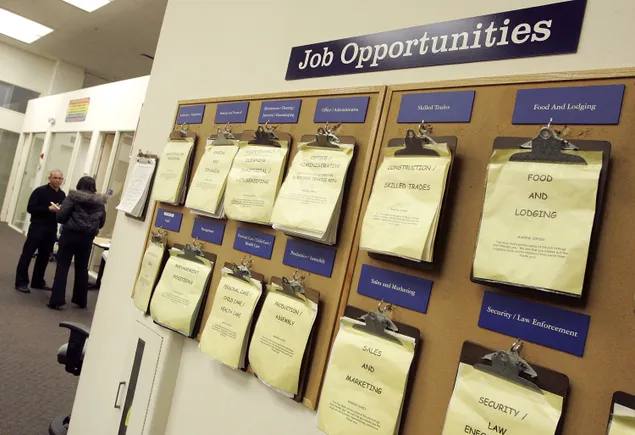When you hear the term Employee Value Proposition or “EVP,” chances are you think of recruitment campaigns or catchy taglines. But as Blu Ivy Group Co-Founders Leandra Harris and Stacy Parker explain in the latest episode of Blu Thread Conversations, that’s missing the point.
EVP—the Employee Value Proposition—was never meant to just sell careers. It was designed to align culture, leadership, and performance . In Episode 18 of Blu Threads Conversations, Leandra and Stacy unpack why so many EVPs fall flat, how to bring them back to life, and what it takes to transform your employer brand from a slogan into a strategy.
➣ Listen to the full episode on YouTube
What this blog explores:
- what an Employee Value Proposition is and isn’t
- the cost of a weak or mis-governed EVP
- key reasons Employee Value Propositions (EVPs) often fall flat
- what a strong Employee Value Proposition (EVP) can and should deliver
- and where EVP is headed in the age of AI, reputation, real-time culture and leadership promises.
Whether you’re based in Canada or the USA, whether you’re a CHRO, culture lead, employer-brand specialist, talent-acquisition leader or business-executive looking to understand how culture and reputation truly tie into performance, this conversation is for you.
What is an EVP (Employee Value Proposition)?
Leandra and Stacy start by grounding us: what’s the difference between an EVP and, say, your values, purpose or vision?
- As Stacy explains, the term “employer brand” (as defined by Simon Barrow, whom both Blu Ivy Group founders trained under) refers to:
“the package of functional, economic and psychological benefits that are provided by employment and that are identified with that company.”
- The EVP is then the promise; the commitments to talent (employees and candidates) of what they will get by joining and staying, in return for what they give in job, effort and culture.
- Leandra emphasizes that your purpose, vision, values and behavioural expectations are the narrative. The EVP is the promise-back. When these are disconnected, the EVP is reduced to “a tagline and a poster.”
➣ The key takeaway: an Employee Value Proposition (EVP) is not just for job-ads, or recruitment copy. It must be the foundational element of culture narrative, reputation and employee experience to make a broad and lasting impact on the business.
Why do EVPs fail and what is the cost?
The cost of a weak or absent EVP is real: more attrition, disengagement, loss of productivity, inability to differentiate on anything but compensation, and often a drag on overall brand reputation and trust.
- Stacy points out: when your psychological contract (what employees believe you’ll deliver in return for their work) is not clear, you leave loyalty and performance on the table.
- Leandra reflects on how Employee Value Propositions got treated as short-term recruitment tools during the hiring frenzy of 2021-2023, and how many of the organizations in that time frame now question the strategic value because they launched something externally but didn’t embed or operationalize it internally.
- Why the scepticism? Because many Employee Value Propositions:
- were built for recruitment only, not culture
- lacked full stakeholder involvement (especially managers and leadership)
- lacked governance, measurement and integration
- boiled down to creative assets rather than lived-experience changes
- skipped the operational activation piece
What a strong EVP can do
Good news: when done well, EVPs become a strategic asset not just HR or talent acquisition fodder.
Blu Ivy Group Co-founders Leandra and Stacy, highlight these positive outcomes:
- Aligning leadership accountability with what is promised to employees (so the narrative isn’t detached from lived reality and employee motivators)
- Enabling recruitment, retention, engagement and culture to work together rather than separately
- Serving as a compass for how managers lead, how the organization invests, and how the employee experience evolves in the most meaningful manner.
- Supporting reputation in the age of transparency, online reviews and social listening (Stacy references Reddit and other forums as emerging spaces of organizational reputation)
- Driving business performance by linking culture and human-experience to strategic objectives
They also underscore the importance of governance: Who “owns” the EVP? How is it woven into leadership, manager behaviours, performance recognition, recruitment, and every phase of the employee lifecycle? The strongest programs have multi-functional ownership (HR, communications, marketing, leadership) and a scorecard tied to business outcomes, not just “career-site visits”.
What mistakes to avoid
From the conversation:
- Skipping or marginalizing managers: middle-managers often feel disconnected from the EVP and yet they deliver culture, and the bulk of daily talent communications.
- Focusing only externally: flashy recruitment assets without internal alignment leads to mistrust and dissonance and has zero impact on reputation.
- Over-wordsmithing & jargon: EVPs that feel corporate-speak rather than human-voice lose lifespan and authenticity.
- One-and-done mindset: EVP is not a static campaign; it must evolve with the organization, its unique audiences, and the business climate.
- Lack of governance and measurement: Without ongoing listening, KPIs and integration, you risk the EVP becoming mere “poster copy.”
Looking ahead: The future of EVP
In a world of hybrid work, AI, and shifting talent expectations, the EVP must evolve faster than ever.
Leandra and Stacy share their predictions:
- We’ll see EVPs become more agile: real-time listening, flexible messaging systems that connect to diverse audiences, and continuous evolution messaging rather than one-time brand launches.
- Leadership value propositions will gain prominence: not just “What do employees get?” but “What do our leaders and managers get by committing to our teams and our strategic goals?”
- In 2026 Employer Brand Performance and EVPs will be judged by their impact on reputation, leadership credibility, and cultural health – not vanity or volume metrics. That’s the level of insight the CEO needs.
- More organizations in 2026 will revisit their EVPs to ensure that the culture story inspires action. They will focus the message on more than values, purpose and behaviours – and will embed the Employee Value Proposition to have a reciprocal employee promise and compelling story arc.
- AI and other tools will play a role but they caution: if AI drives generic copy and dilutes voice, the differentiation and authenticity of the EVP suffers. The heart must still be human.
What this means for you (action steps)
If you’re leading or preparing to lead employer brand or culture strategy, here’s what Leandra and Stacy want you to remember: the Employee Value Proposition (EVP) is not just about talent attraction, it’s about leadership enablement.
- Pause & asses: When was your EVP last reviewed? Is it still relevant for talent? Does it have the foundations for your culture narrative, and driving your business strategy forward?
- Stakeholder-map: Make sure your leadership, your managers, your HR/TA/communications teams are aligned on the promise and its operational implications.
- Embed: Ensure the Employee Value Proposition is part of recruitment, onboarding, leadership training, manager performance, recognition, employee-experience design.
- Measure & listen: Deploy ongoing qualitative and quantitative listening. Use dashboards (e.g., our Employer Brand & Culture Index),to monitor reputation channels externally (including Reddit, Glassdoor) and tie your metrics back to business outcomes. It ensures you have the tools for continuous evolution vs one time brand projects.
- Capitalize on voice: Simplify your pillars. Use employee language. Less jargon, more truth. Involve employees in telling the story both internally and externally.
- Govern for longevity: Define ownership, roles, decision-rights. Make the EVP part of the culture-narrative infrastructure.
- Future-proof: Ensure your EVP has agility. It should evolve with market conditions, leadership shifts, talent expectations (especially given AI, hybrid work, DEI, and changing career models).
Why this matters for employer brand & culture performance
At Blu Ivy Group we’ve partnered with organizations across North America and globally to embed employer brand into strategy, culture and performance. In an era when talent expectations, business models and reputations are shifting fast, your employer brand and EVP are no longer optional, they are strategic advantages.
If you’re ready to move your EVP from “just recruitment marketing” to a “strategic leadership tool,” we’d love to connect. It’s likely you need a partner who understands how to elevate your employer brand from recruitment tool-town to culture-driving, business-enabling asset. That’s exactly what Leandra Harris and Stacy Parker bring to our work at Blu Ivy Group.
➣ Watch the Full Episode Now: YouTube
About Blu Ivy Group
Blu Ivy Group is a globally recognized employer brand, culture and reputation consultancy, helping organizations across Canada, the United States, and worldwide define, activate, and embed their culture narrative, leadership reputation, and employer trust strategy.
For over a decade, Blu Ivy has partnered with leading organizations, boards, and private equity firms to connect people, purpose, and performance – aligning culture, leadership behavior, employer brand and reputation to drive measurable business value.
Our expertise spans employer brand strategy, culture narrative development, reputation leadership, employee value proposition (EVP) development and benchmarking .We help organizations listen deeply, communicate authentically, and lead confidently in a world where culture and reputation have become the true drivers of business growth.
To learn more or connect with our advisory team, visit bluivygroup.com.





















